Morocco is rapidly becoming a sought-after destination, offering an accessible and budget-friendly gateway to North African culture. Positioned on the continent’s northwestern edge, Morocco boasts convenient flight connections from Europe.
Budget carriers like Ryanair frequently provide fares under $100 to Morocco, enabling easy integration into a European itinerary. For travelers arriving from other parts of the globe, Marrakech, Casablanca, and Fez feature major international airports with reliable daily services.
The accessibility of Morocco makes it a compelling destination. This country features diverse landscapes, including deserts, mountains, beaches, charming villages, and bustling cities, ensuring something for every traveler. It’s definitely a top place to visit in Africa.
Beyond the varied landscapes, Morocco offers delicious cuisine, a unique cultural experience, and affordable prices. However, being aware of a few cultural tips and essential information before visiting Morocco can significantly enhance your trip.
So, if you are still questioning, “Why Travel To Morocco?“, here are thirteen compelling reasons to consider Morocco for your next adventure. These are based on personal experiences and highlight the unforgettable memories created while traveling in Morocco.
13 Reasons to Travel to Morocco
- Culinary Delights
- The Ritual of Mint Tea
- Shopping for Unique Souvenirs
- Coastal Charms
- A Glimpse into Islamic Culture
- Affordability
- The Sahara Desert Experience
- Majestic Mountain Ranges
- Architectural Grandeur
- A Sensory Feast
- Feline Companions
- Vibrant Cities
- Work Exchange Opportunities
1. Culinary Delights
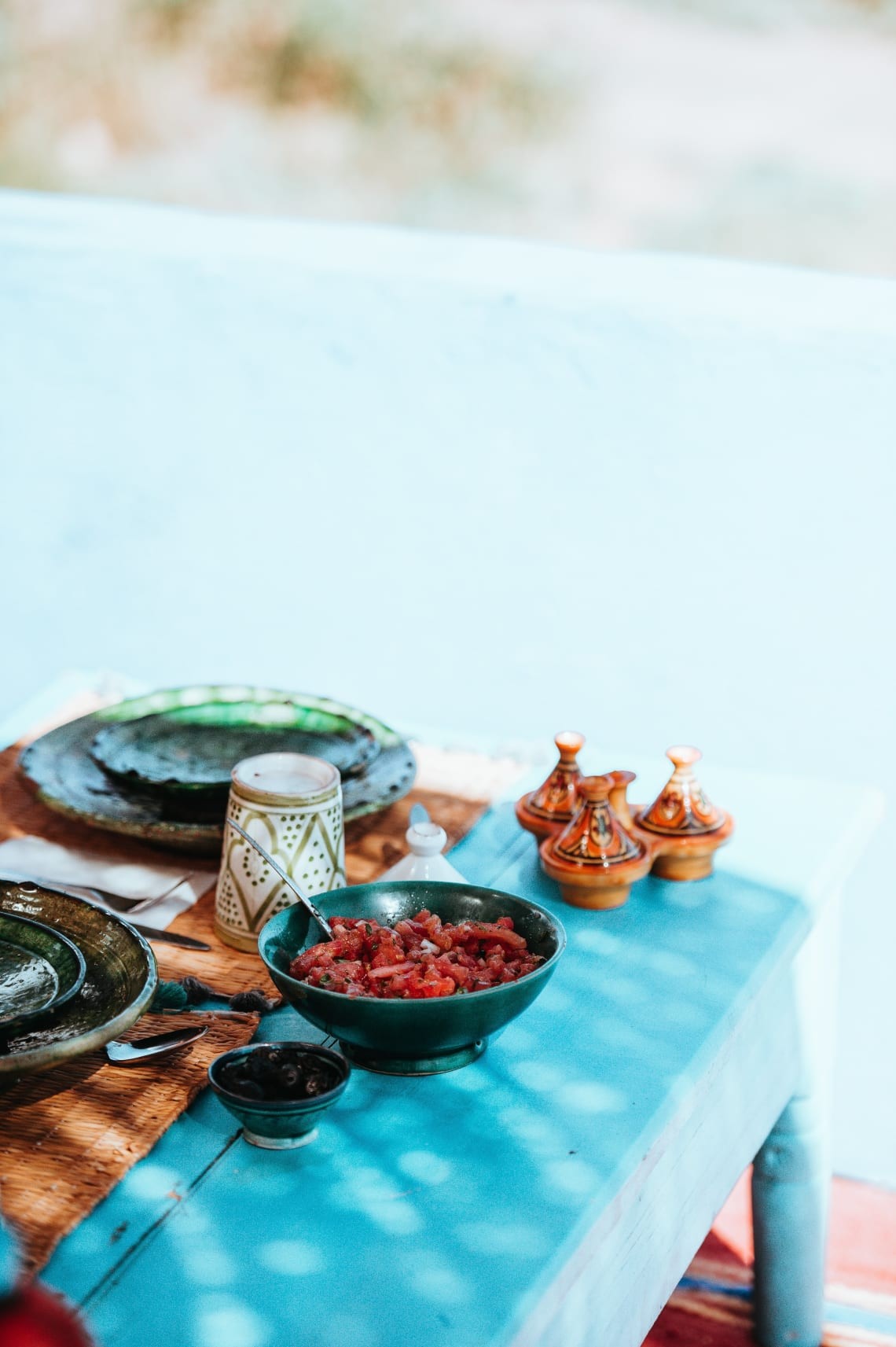 Moroccan cuisine with tagine, couscous, and fresh fruits
Moroccan cuisine with tagine, couscous, and fresh fruits
Nestled below the Mediterranean Sea, Moroccan cuisine shares ingredients with countries like Italy, Spain, and Greece. The peaches, cherries, oranges, dates, and figs are exceptionally sweet and juicy.
Don’t miss the opportunity to try cactus fruit, offering a unique blend of passionfruit and watermelon flavors.
Morocco also boasts incredibly flavorful olives, and the abundant olive oil complements almost any dish. Fresh produce and olives can be purchased inexpensively from vibrant street markets, providing a truly immersive experience.
Popular traditional Moroccan dishes include couscous served with meat or roasted vegetables, omelets with bread and olive oil, and grilled sardines enjoyed near the coast. Tagines, slow-roasted dishes of vegetables, meats, and local spices cooked in a red clay pot, are a must-try.
The cuisine is flavorful and colorful, often using fresh spices like cumin, turmeric, and black pepper.
2. The Ritual of Mint Tea
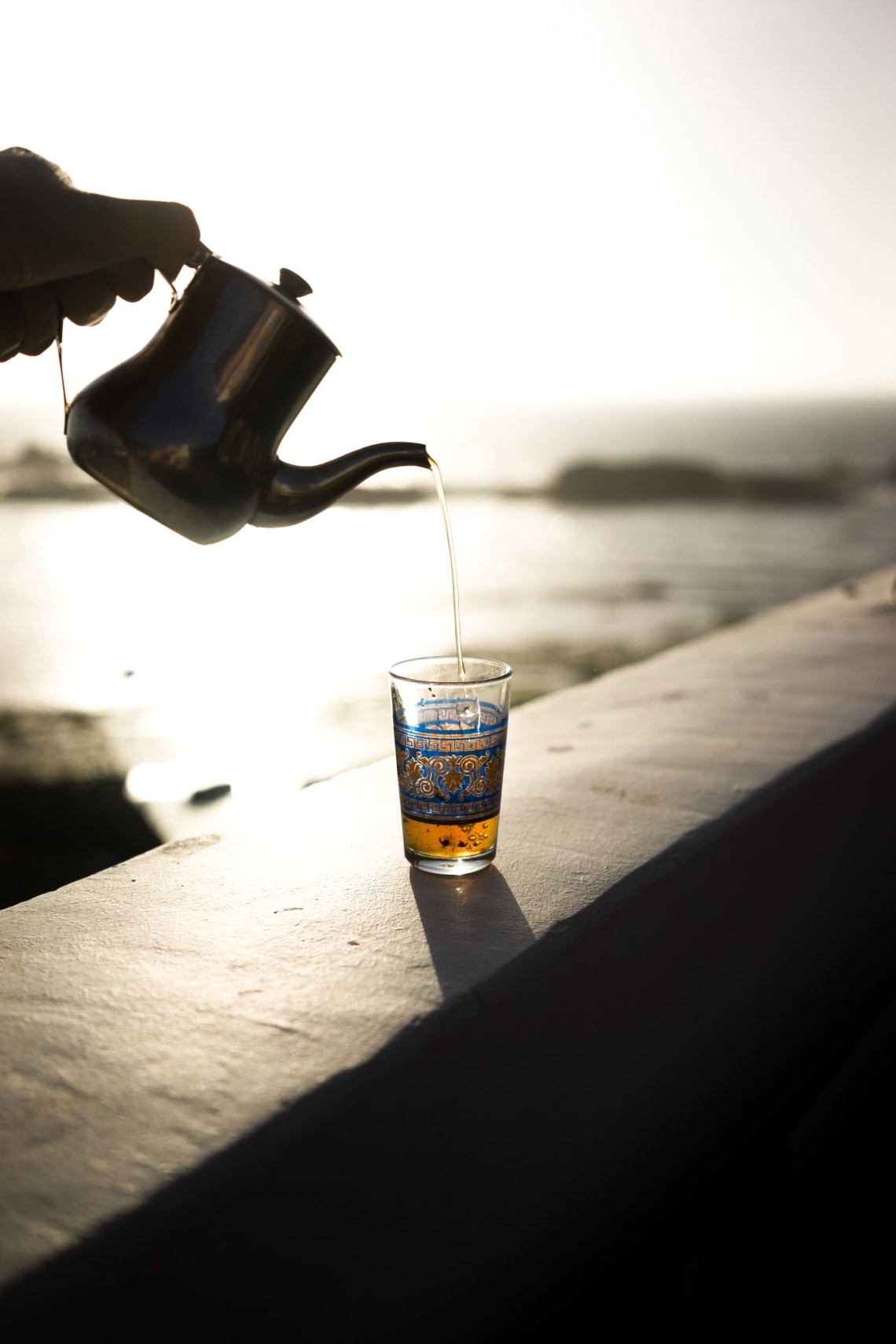 Moroccan mint tea being poured into a glass
Moroccan mint tea being poured into a glass
Enjoying mint tea is a daily custom in Morocco. Fresh mint leaves are added to a silver teapot, sometimes with sugar cubes, and steeped in hot water. The tea is poured into small glass cups and shared with friends and family.
You’ll often be offered mint tea when visiting shops or homes, as drinking tea signifies hospitality. Savor this experience; it’s a refreshing and authentic taste of Morocco.
Despite the heat, tea in Morocco is always welcome. Warm beverages can cool the body and quench thirst, so never decline a cup, even on a warm day.
3. Shopping for Unique Souvenirs
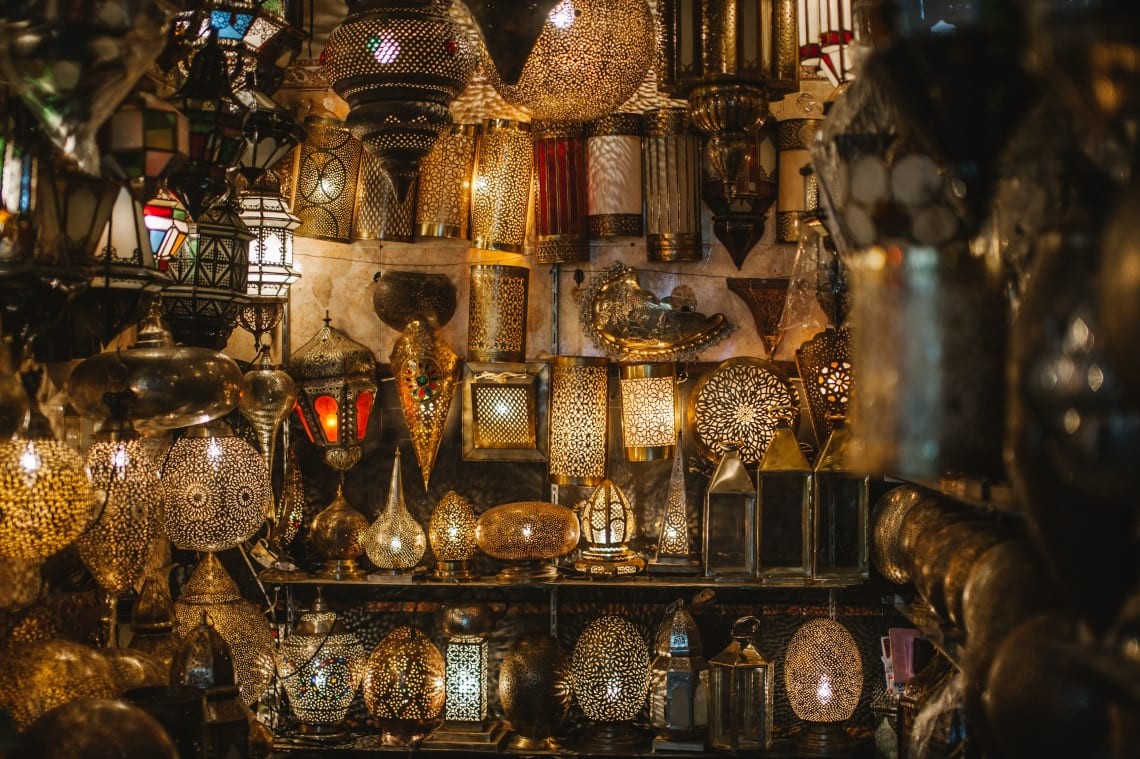 Lamps and lanterns for sale at a market in Marrakech
Lamps and lanterns for sale at a market in Marrakech
Traditional Moroccan handicrafts are exquisitely beautiful and make memorable souvenirs from your Morocco trip. From intricately painted ceramics to bejeweled gowns and shoes, to hand-woven rugs, you can find unique and stunning goods in Morocco.
Explore the Souks, traditional Moroccan markets offering local crafts, typically covered to provide shade. Bargaining is common, but be respectful and acknowledge the artistry of handmade items.
Organic health stores offer natural treasures. Discover teas, herbs, spices, soaps, oils, and dried flowers, and learn about their healing properties.
Be sure to purchase Moroccan Argan oil, a beneficial product for skin and hair, directly from its source.
4. Coastal Charms
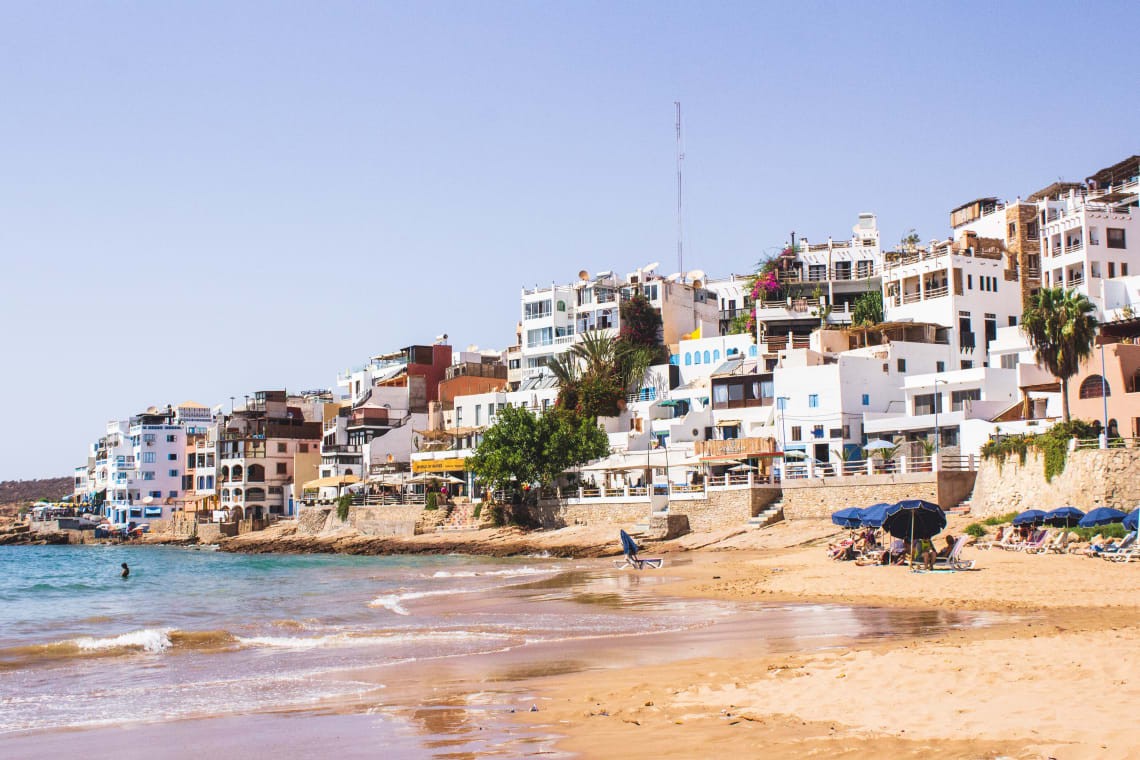 Sunset view of Taghazout, a coastal town in Morocco known for surfing
Sunset view of Taghazout, a coastal town in Morocco known for surfing
Essaouira, Taghazout, Agadir, Safi, and Mirleft are popular coastal towns in Morocco ideal for surfing, swimming, and soaking up the sun. The coast is attractive year-round; the winter offers great surf, and the Atlantic Ocean provides relief from the summer heat.
Enjoy fresh seafood, prepare for the coastal winds, and embrace the laid-back atmosphere of these surf towns. Experience genuine Moroccan hospitality from the friendly locals.
5. A Glimpse into Islamic Culture
 Exterior of a mosque in Fez, Morocco, showcasing Islamic architecture
Exterior of a mosque in Fez, Morocco, showcasing Islamic architecture
Islam is the primary religion in Morocco, and religious customs are visible in daily life.
Mosques are present in every town, ranging from grand structures in larger cities to modest ones in smaller communities. The Mosque Hassan II in Casablanca is the largest Mosque in Africa and the fifth largest globally. Typically, non-Muslims cannot enter Mosques, but the architecture can be admired from the outside.
The “call to prayer” is broadcast five times daily. An Arabic song from the Mosque speakers reminds Muslims to pray.
Observe the conservative dress code of local women. As a female traveler, respect their customs and cover your shoulders, knees, and chest as much as possible.
Even at the beach, women are often fully dressed. Use your judgment based on how much you want to attract attention.
6. Affordability
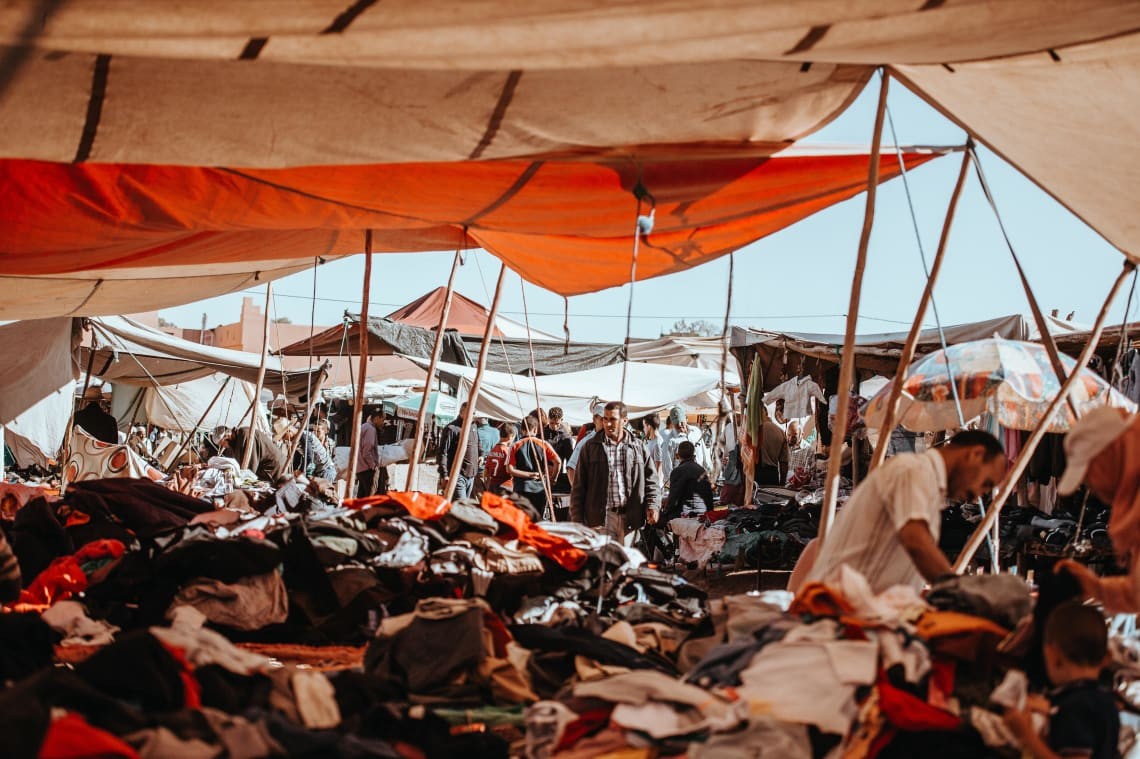 A local market in Morocco with fresh produce on display
A local market in Morocco with fresh produce on display
Morocco is a budget-friendly destination for backpacking and traveling on a budget. The cost of living is relatively low, and you can enjoy tours and activities without overspending. The Worldpackers Morocco travel guide offers planning assistance for an affordable trip to Morocco.
Even in upscale restaurants, a three-course meal can cost around 120 dirhams, or $12. Tourist restaurants average around 50 dirhams ($5), and local eateries offer meals from 10-20 dirhams ($1 or $2). Street market produce is even cheaper; large bags of fruits and vegetables are available for 10 dirhams each ($1), and bread loaves cost only a few cents.
Hostels provide an economical option for accommodations in Morocco. The average hostel price in touristy cities is about $7. You can also meet other travelers and make friends while traveling when staying in hostels, making them a great option if you’re traveling alone in Morocco.
Consider working in exchange for accommodation in Morocco, as many hostels, language schools, and surf camps in Morocco need assistance. This offers a richer cultural experience and free living.
Compared to countries like the USA, Australia, and Europe, life in Morocco is quite affordable.
7. The Sahara Desert Experience
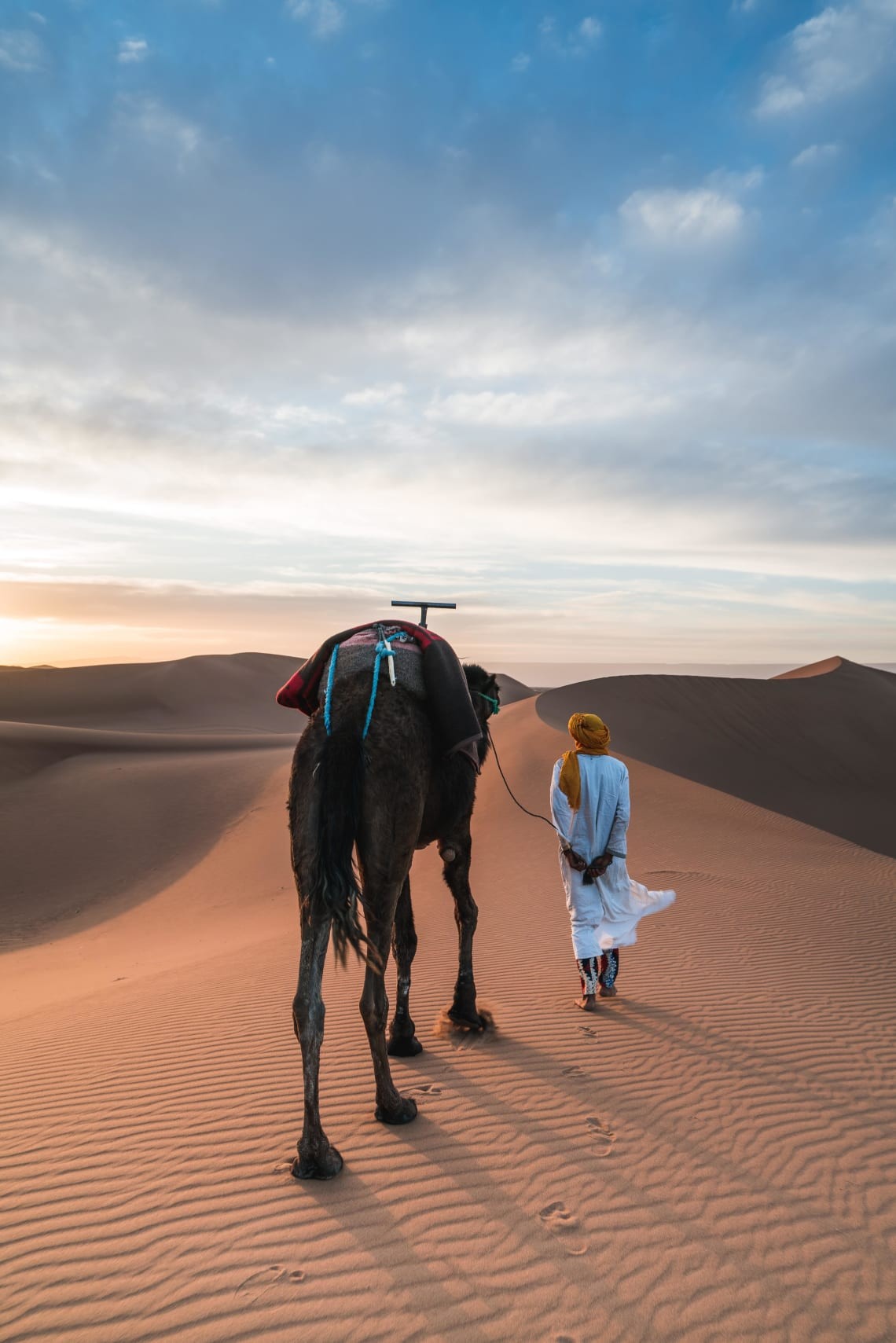 A person standing on a sand dune in the Sahara Desert in Morocco at sunset
A person standing on a sand dune in the Sahara Desert in Morocco at sunset
The Sahara Desert is a mesmerizing place, and Morocco offers an ideal starting point for exploring the dunes. Three-day tours, including meals, luxury desert camping, and a camel trek, are available for approximately $150-$200. Research tour companies carefully.
A tour is recommended when visiting the Sahara. While independent travel is possible, an experienced local guide simplifies the experience. Independent travel expenses can quickly approach the cost of a tour.
Prepare for intense heat when visiting the Sahara. Summer temperatures can reach 115 degrees Fahrenheit, or 45 degrees Celsius. Despite the dry heat, bring sunglasses, sunscreen, a hat, and lightweight clothing.
The Sahara’s beauty is undeniable. Endless soft golden sand dunes fill the horizon, and climbing these dunes is a surreal experience. The atmosphere is peaceful, and sunsets and sunrises are unforgettable. The stars are amazing due to the minimal light pollution.
8. Majestic Mountain Ranges
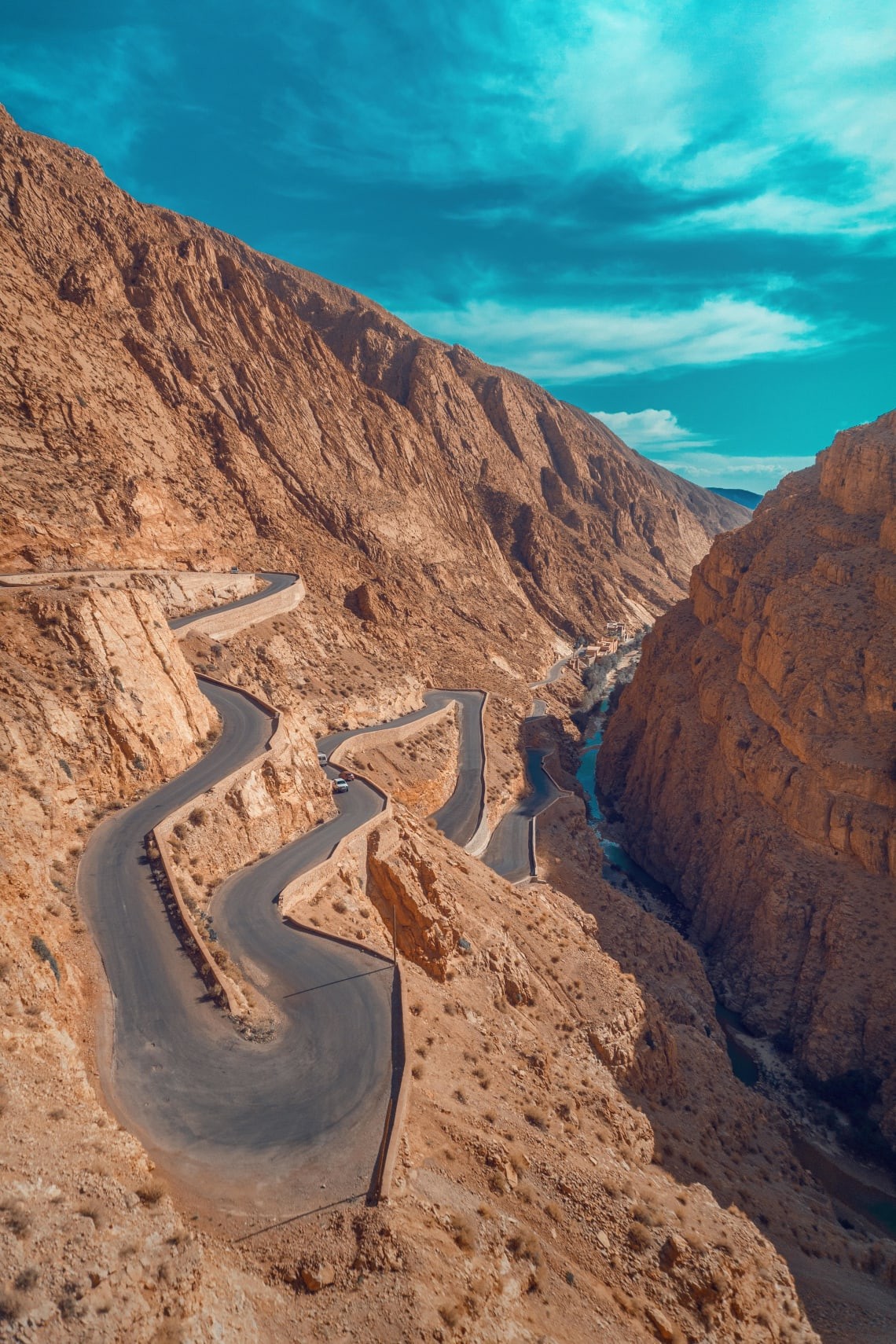 The Dadès Gorges in the Atlas Mountains of Morocco
The Dadès Gorges in the Atlas Mountains of Morocco
One of the reasons Morocco is a good place to visit is its diverse landscapes! In addition to beaches and deserts, Morocco boasts mountains!
The Rif Mountains in the north and the Atlas Mountains in the center offer stunning vistas. Driving through these mountains reveals rugged cliffs, vibrant colors, and small villages. Be prepared for winding roads and adventurous driving.
Hiking and trekking opportunities are plentiful, with organized tours or independent exploration possible. Adventurous travelers can hike Mount Toubkal, the highest mountain in Northern Africa.
Local villages like Imlil in the Atlas Mountains and Chefchaouen in the Rif Mountains provide peaceful accommodations and starting points for hikes.
Visiting Berber Villages, communities of indigenous North Africans, offers an enriching glimpse into the ancient cultures of Morocco.
9. Architectural Grandeur
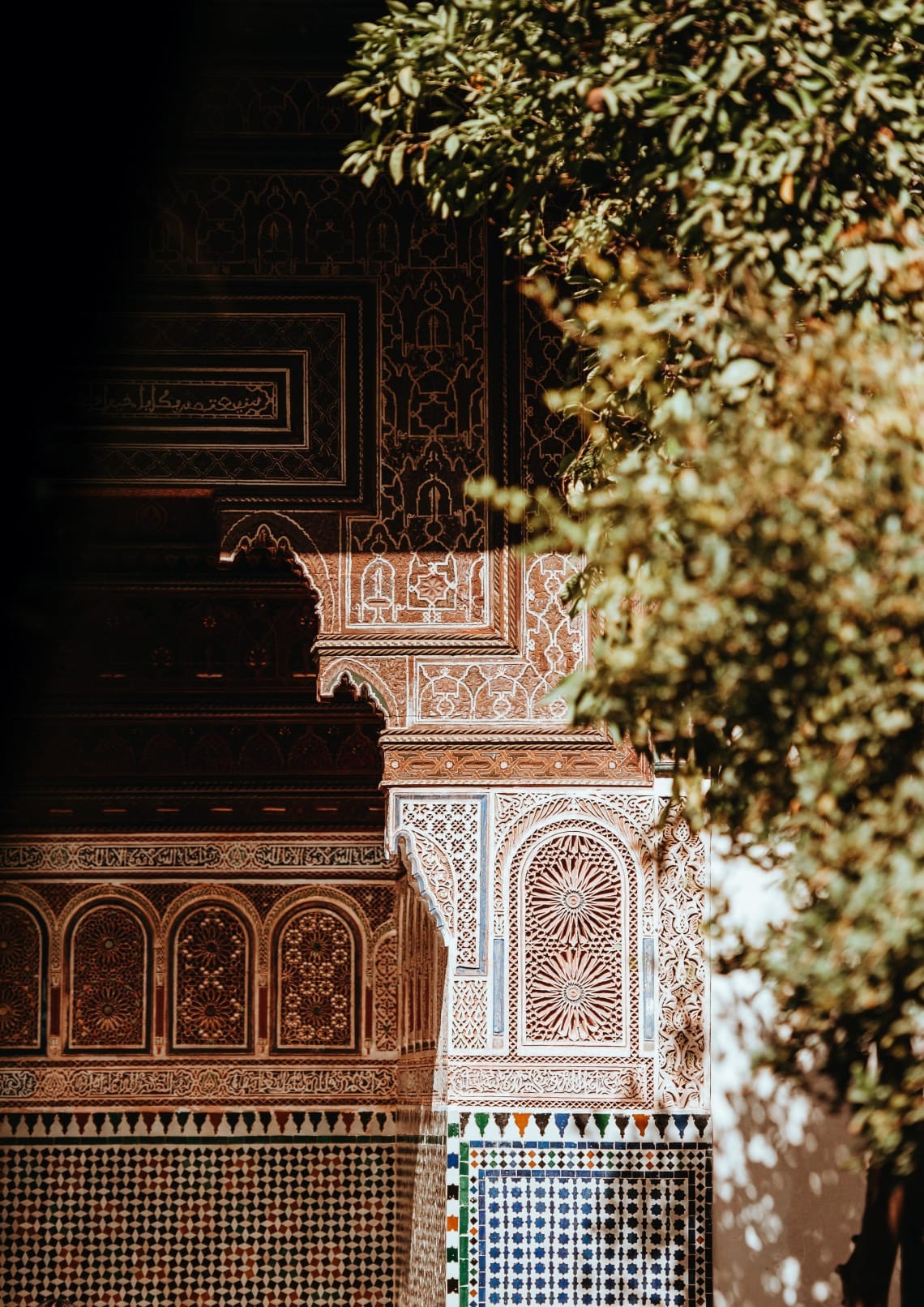 A close-up of intricate Moroccan architecture
A close-up of intricate Moroccan architecture
Moroccan architecture is captivating, and you’ll be tempted to photograph every street. From luxury hotels to budget hostels, trendy cafes to government buildings, architectural design is evident everywhere.
Intricate tiles create patterns, appealing colors adorn surfaces, and arched doorways and passageways are common. Design in Morocco blends intricate decoration with stunning simplicity.
Buildings often use red clay, particularly in the mountains and desert. There are work exchanges where you can help build these simple homes.
Islamic mosques enhance the scenery with their architecture, whether simple or grand.
10. A Sensory Feast
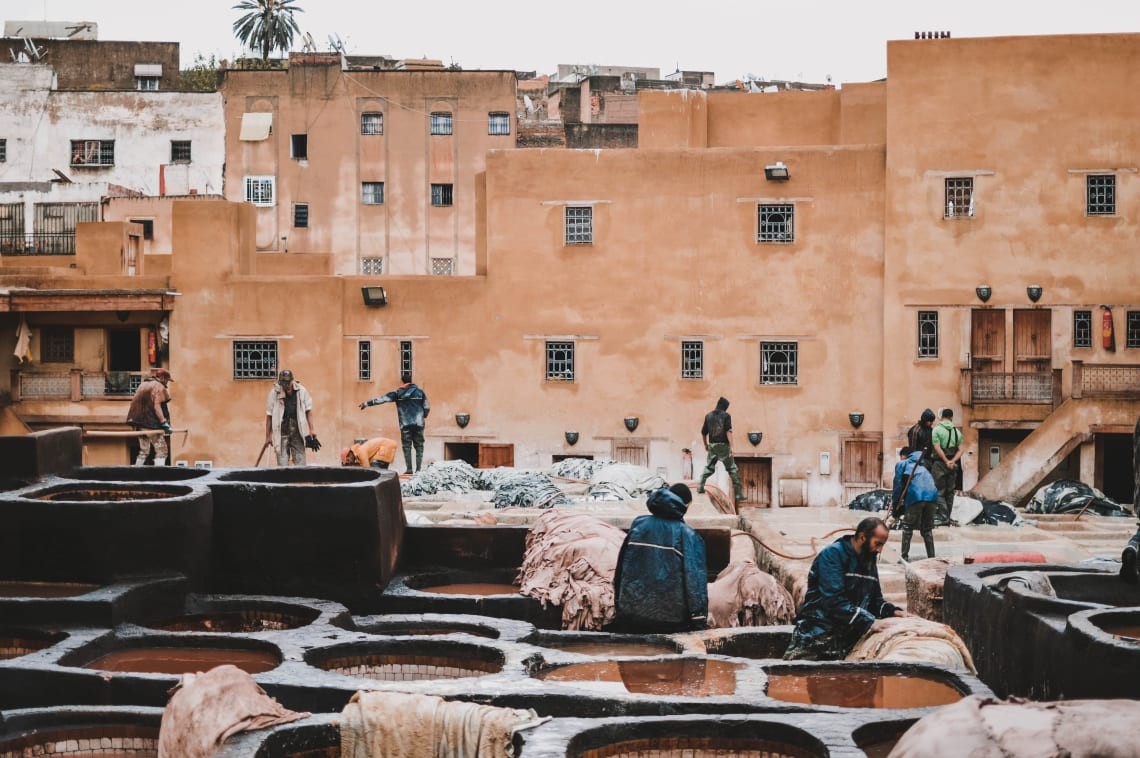 A tannery in Fez, Morocco, showcasing the traditional process of leather making
A tannery in Fez, Morocco, showcasing the traditional process of leather making
If you’re still asking, “Why visit Morocco?“, the sensory experience alone is a compelling reason to add Morocco to your bucket list.
Morocco is a sensory roller coaster. Colors, scents, and sounds fill your mind. This is most evident in cities and larger towns; more secluded areas offer peace and tranquility.
In towns, especially in the Medinas (walled mazes with courtyards and street markets), the chaos can be overwhelming.
Mountains of colorful powdered dye, patterned pots, and donkeys carrying watermelons fill your vision.
Locals converse loudly in Arabic, and catchy Moroccan music plays in the background.
You’ll smell spices, pastries, tagines roasting over coals, and leather from local tanneries.
Morocco is a diverse and colorful country, and it’s never boring.
11. Feline Companions
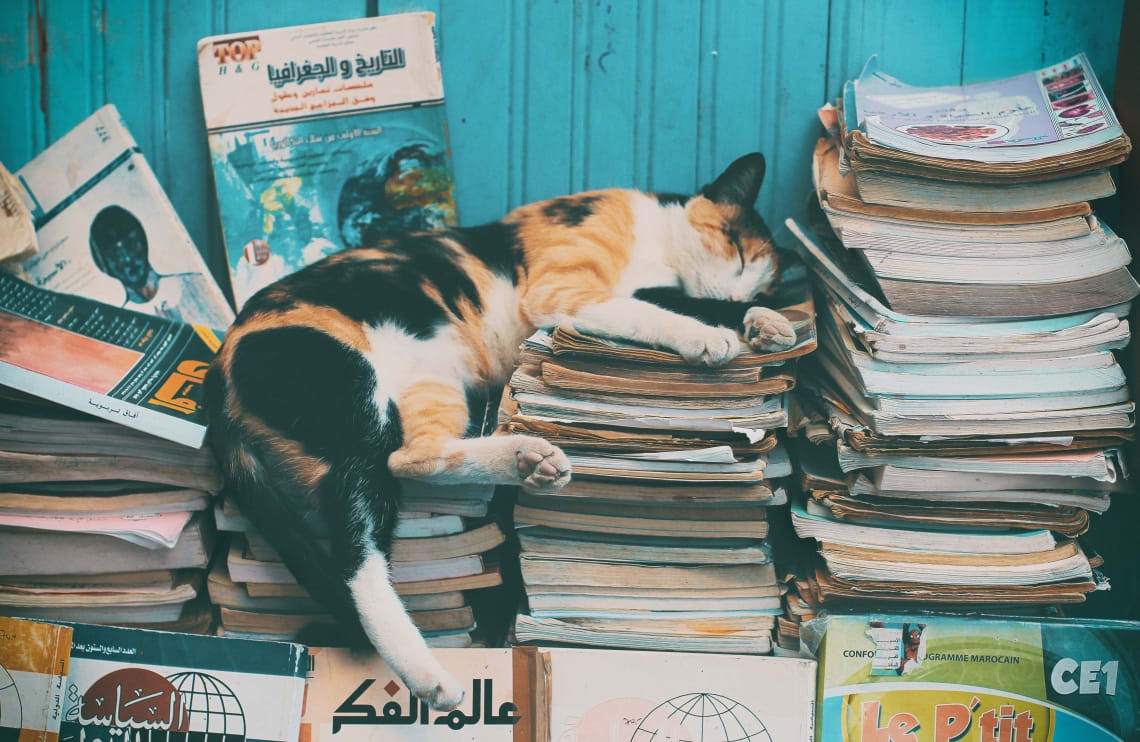 A cat napping in Morocco
A cat napping in Morocco
If you like cats, Morocco is a great destination.
Stray cats are everywhere, and locals often feed them. They might beg for food, but they are usually relaxed. Avoid touching them without washing your hands afterward.
12. Vibrant Cities
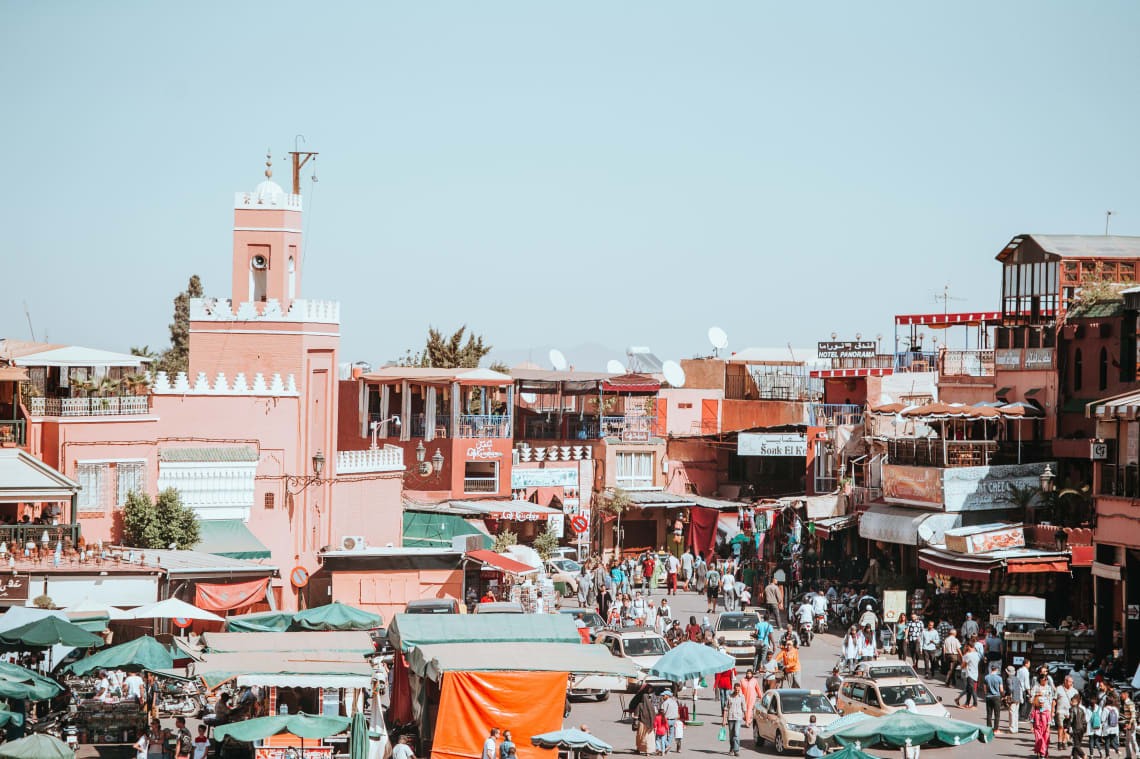 A panoramic view of Marrakech, Morocco
A panoramic view of Marrakech, Morocco
If you appreciate bustling cities, Moroccan cities will amaze you. They are often crowded and chaotic, but peaceful areas can be found. Cities combine food, architecture, religious culture, shopping, and markets.
Visit Marrakech for an introduction to Moroccan culture. Visit Fez for the richest culture and history in Morocco; it has the oldest Medina and the oldest university in the world.
Visit Chefchaouen for the iconic blue city streets, and visit Taghazout to learn how to surf alongside exploring the city.
13. Work Exchange Opportunities
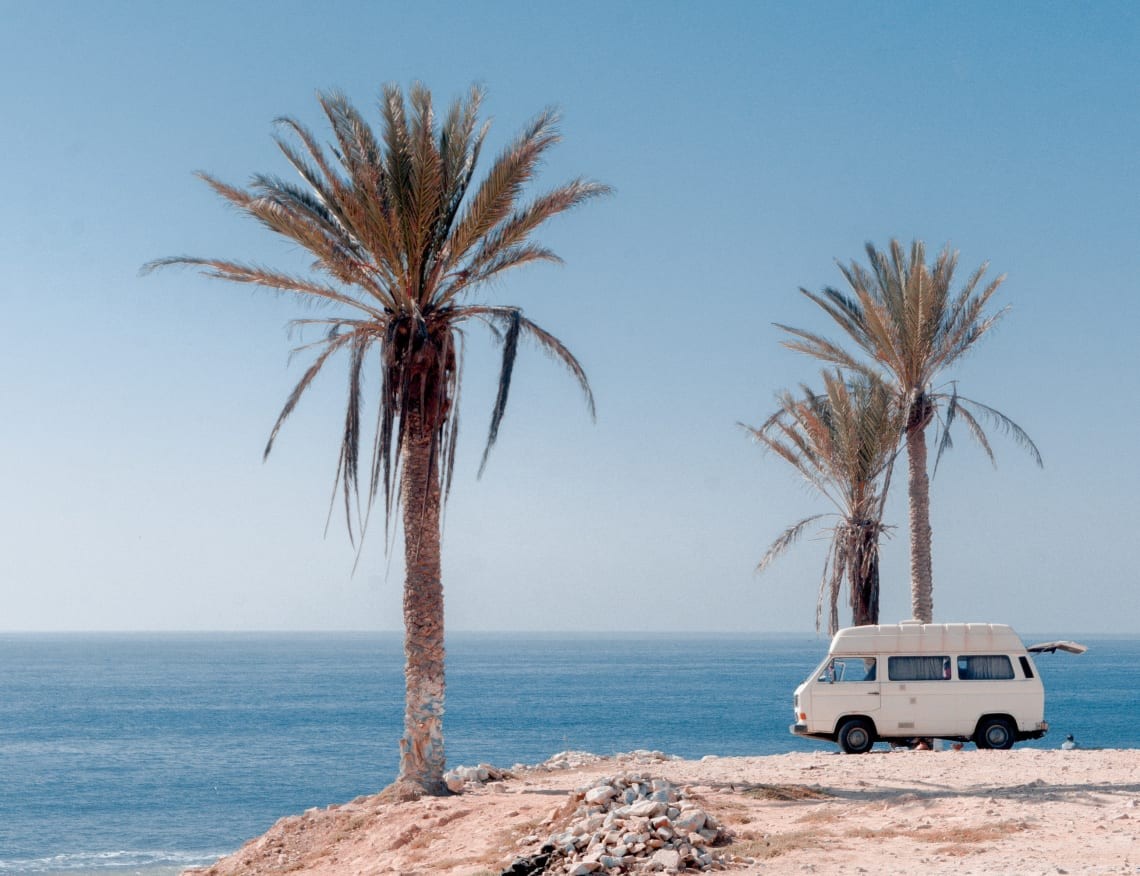 A person participating in a work exchange in Morocco
A person participating in a work exchange in Morocco
The final of the reasons to travel to Morocco is the availability of work exchanges in Morocco through Worldpackers.
Consider a hostel in Taghazout, a surf town on the southern coast. Assist with social media marketing in exchange for surfing lessons and free accommodation and meals.
You can also teach English or French for an NGO in Salé, making a positive impact on local children.
Work exchanges near the Sahara Desert are available. Help plant trees, fruits, and vegetables in Tagounite, a desert oasis. Try a work exchange that allows you to learn Moroccan cooking, or promote local events. These opportunities allow you to immerse yourself in Moroccan culture and save money while traveling.
There is a seemingly endless list of things to do in Morocco, and these cultural highlights will hopefully inspire you to visit on your next trip!